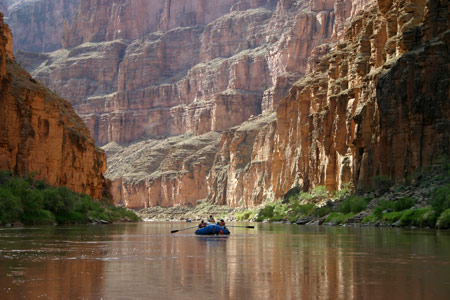That didn’t take too long. Last month, I wrote about the renewed, and concerning, focus on both the National Environmental Policy Act (NEPA) and the Antiquities Act by the House Natural Resources Subcommittee on Public Lands and Environmental Regulation and its chairman, Rep. Rob Bishop. Well folks, action has come quickly.

On February 5, Rep. Bishop sent a letter to the Government Accountability Office (GAO) requesting a study on the financial and time costs, associated litigation and delays due to NEPA that the Departments of Defense, Interior, Transportation and Energy and the U.S. Forest Service incurred over the last five years. The GAO request was co-signed by the chairmen of the House Committees on Natural Resources, Energy and Commerce, Armed Services, and Transportation and Infrastructure. And while the natural reaction might be “it’s only a study,” remember that in the world of politics, very rarely is anything as simple as it may seem. My instincts are telling me this study is just the tip of a long-smoldering volcano (yes, I mixed my metaphors) and is merely the lead-in to a strong push for a reformed or scaled-back NEPA process. We shall see.
The push for potential NEPA reform, however, is far from the front burner of policy news this week. That dubious honor goes to the sequester. You have no doubt been inundated with all manner of news about the effects of this crisis. As the deadline draws closer for Congress to act before the $85 billion in cuts goes into effect, more details emerge as to what this means for us all.

The National Park Service issued a memo at the end of January outlining the “priority” of cuts that it needs to make if the sequester takes place. The Park Service is responsible for about $110 million in cuts. While nominally, this is a five percent cut, due to its timing, the effect would be more along the lines of an eight or nine percent cut. For better or worse, it appears that personnel costs, including hiring and furloughs, are first in line to be cut by the Park Service. These cuts will, in turn, impact the operation of the parks themselves.
According to the Coalition of National Park Service Retirees, the personnel cuts required under the sequester, along with additional budgetary cuts that must be made, will delay the openings of the entrance roads to Yellowstone, Grand Canyon and Yosemite National Parks by up to a month. Grand Teton National Park will see the closure of visitor centers and a nature preserve for the entire season while Great Smoky Mountains National Park will suffer the shutdown of five campgrounds and picnic areas. The opening of Glacier National Park’s Going-to-the-Sun Road will be delayed two weeks while Grand Canyon National Park will delay opening the East and West Rim drives. Yet, these are perhaps just the most tangible impacts. Reduced numbers of park personnel means limited operating hours for visitor centers; less maintenance on roads, buildings and trails; and other limitations that may not yet be known.
Whatever your personal feelings on the sequester, these are real cuts to access to America’s most beautiful spaces. While Congress sits idle, this sad and preventable outcome for the millions of visitors to our national parks will resonate for the seasons to come.